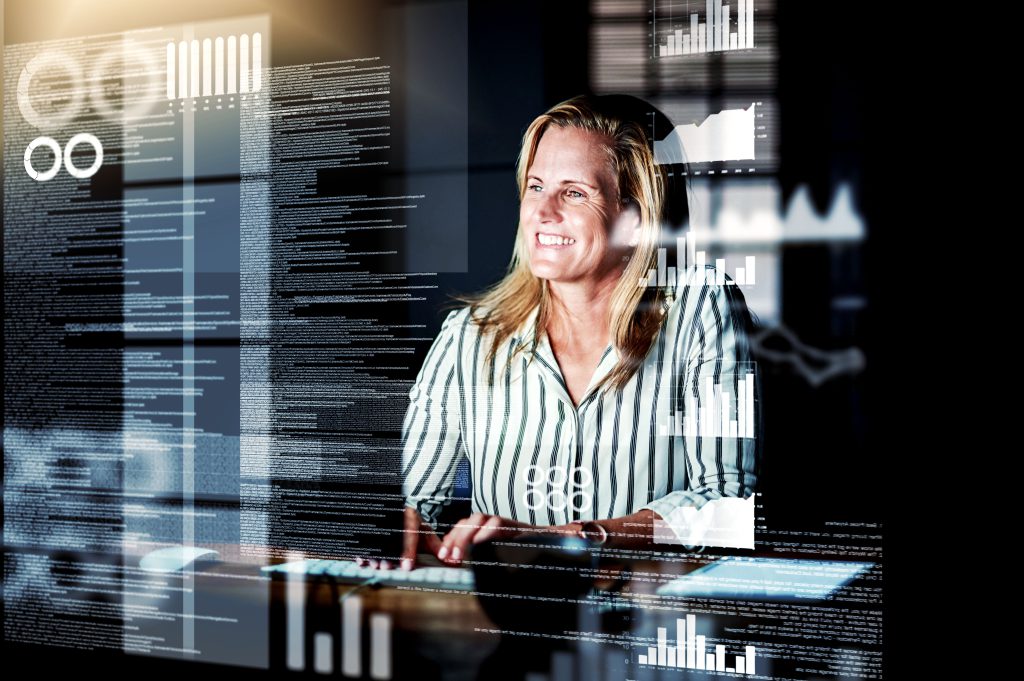First things first – What is Business Intelligence?
Firstly, Business Intelligence. It is not Data Science, but it’s a big part of it. Before we try to apply predictive analysis, we must analyse patterns of past behaviours to discover the path for forecasting.
BI delivers data-driven answers to questions like:
“How many units were sold? In which demographic were the most goods sold? Which product was selling the best? How did marketing campaigns perform last quarter in terms of click-through rates and revenue generated? How does that compare to the performance in the same quarter of last year?”
Business Intelligence analysts create reports, dashboards, graphs and all other visual representations of data to display findings in an easily acquirable way. In the end, what’s the point of analysis if the ordering party can’t understand a thing.
Where is business intelligence used?
- Price optimisation and data science
- Inventory management and data science
The second thing predicts the future
Data science is an interdisciplinary field that uses scientific methods, processes, algorithms, and systems to extract knowledge and insights from noisy, structured, and unstructured data ¹ ². Those who combine a range of skills to analyse collected data and derive actionable insights are called Data Scientists.
So, firstly BI team extracts insights from past behaviours, then data scientists can start to predict future values. The accuracy will depend on the chosen method.
Traditional data: traditional data science methods
Big Data: Machine Learning

Traditional forecasting methods use classical methods like
- linear regression analysis,
- logistic regression analysis,
- clustering,
- factor analysis,
- time-series.
It’s all about the algorithm
The main difference (and advantage of) machine learning over the traditional methods is the algorithm. It gives directions a computer can use to find a model that fits the data as much as possible. So, instead of instructing a computer (as we do in traditional methods), a computer uses the algorithm to learn and find a model by itself. In that case, a computer needs much less human involvement. However, in order to learn the algorithm, it has to go through enormous amounts of data.
There are three major types of machine learning:
- supervised,
- unsupervised,
- reinforcement learning
There are three major types of machine learning:
- Discover more about your customers
habits, demographics, characteristics, and much more. Understanding your clientele helps you to raise interest in your products, advertise better and evolve the customer experience - Elevate security and eliminate fraud faster
Machine Learning algorithms will help you to detect breaches faster and with greater accuracy than humans might. Must have for all banks and helpful to all businesses, especially those who handle sensitive data. - Control and forecast internal finances
ML allows forecasting financial growth or decline - Increasing efficiency of business processes
identify problems and improve business processes. - Predict market trends
with Big Data and Machine Learning it is possible to identify possible changes in the market. Such an option gives you a huge advantage over all competitors who couldn’t use data science.

Data Science is an amazing field that can bring a vast diversity of benefits. With the right data scientists, who know where to find, how to prepare and analyse data as well as pose crucial questions, you can find out many profitable answers.
¹ Dhar, V. (2013). “Data science and prediction”. Communications of the ACM. 56 (12): 64–73. doi:10.1145/2500499. S2CID 6107147. Archived from the original on 9 November 2014. Retrieved 2 September 2015.
² Jeff Leek (12 December 2013). “The key word in “Data Science” is not Data, it is Science”. Simply Statistics. Archived from the original on 2 January 2014. Retrieved 1 January 2014.


